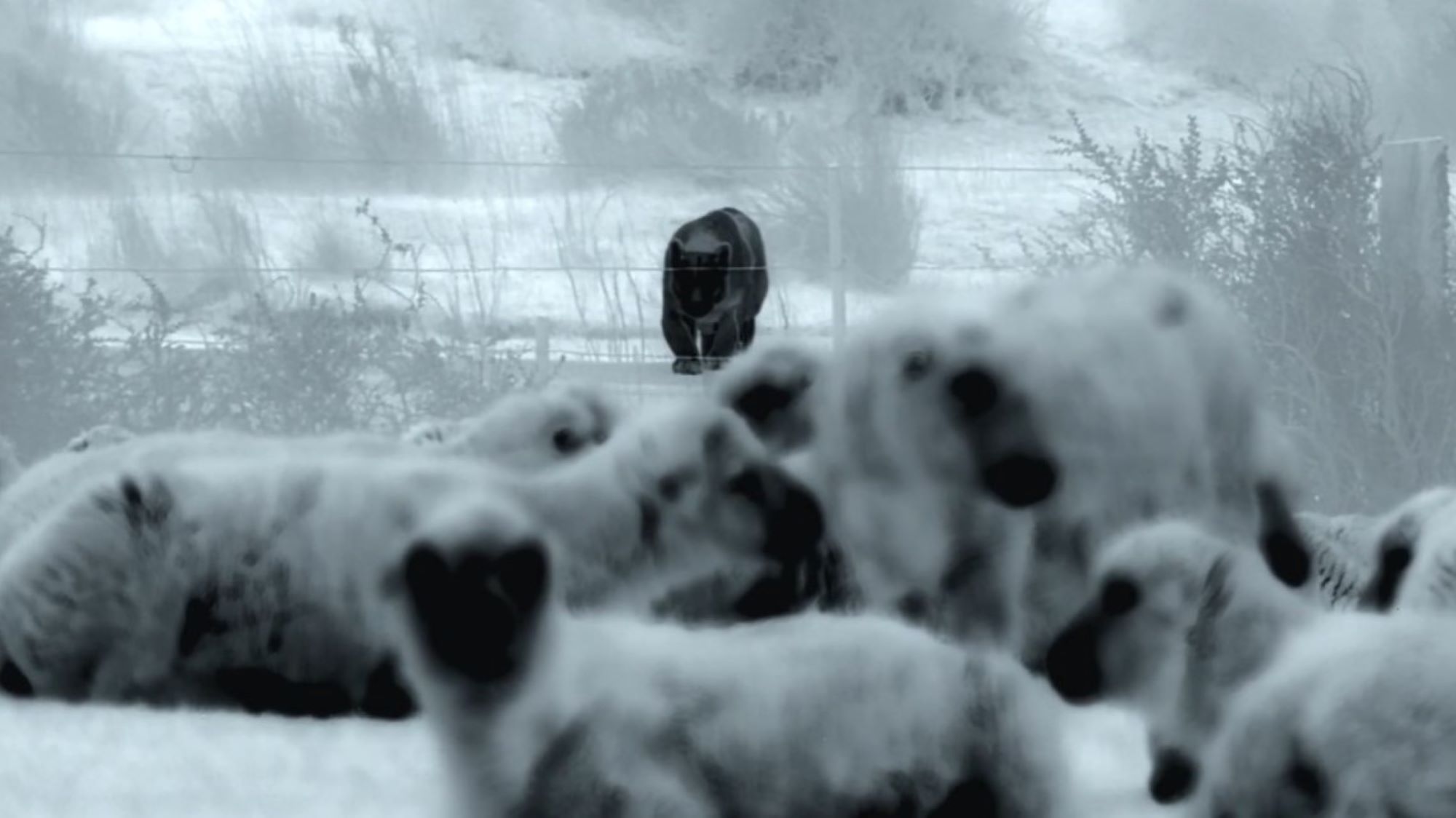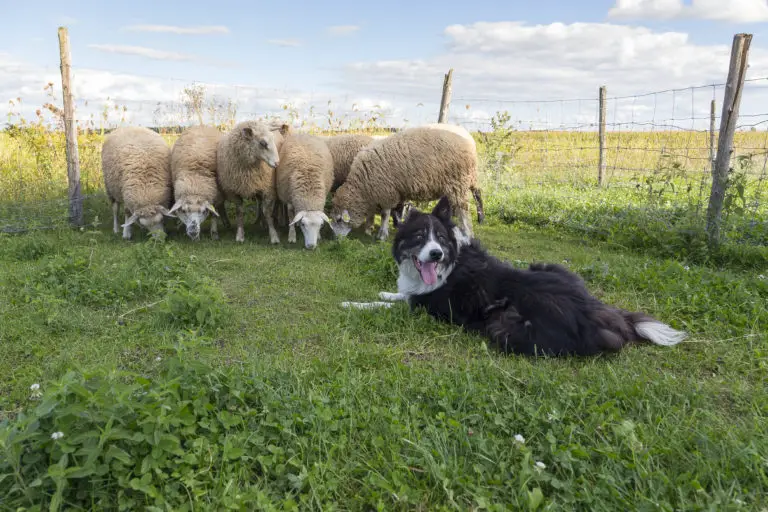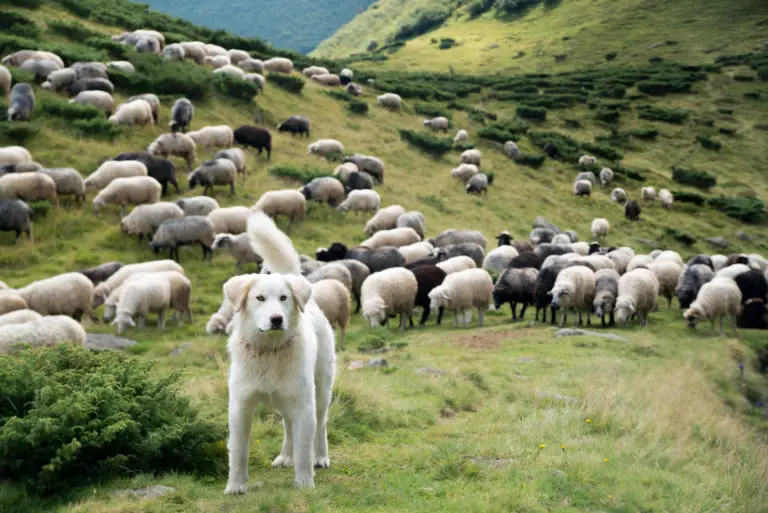An astonishing video captured using heat-sensitive cameras and drones showcases guard dogs successfully stopping a puma from preying on sheep in the dark Patagonian mountains. This groundbreaking footage provides a rare glimpse into this behavior never before seen.
A mesmerizing new National Geographic series, ventures to remote locations worldwide to observe creatures up close and personal in their natural habitats. In the episode titled “Patagonia Puma,” Bertie Gregory, a National Geographic Explorer, and his team explore the rugged mountainous region of Patagonia in southern Chile. Their objective is to document the lives of pumas (Puma concolor) and the challenges they encounter, particularly their interactions with farmers, who historically resorted to killing pumas attacking their livestock.

The remarkable footage takes place on a sheep farm, deep in the Patagonian night. Bertie Gregory and cameraman Sam Stewart utilize thermal imaging cameras and a drone to pierce the darkness. From the top of a ridge, they spot a puma stealthily descending towards the unsuspecting sheep. “They have absolutely no idea that it’s there,” remarks Stewart while filming the scene.
Guard Dogs Brave the Night to Protect Sheep
Just as the puma confidently clears the farm’s fence and prepares for the hunt, the guard dogs sense danger and begin barking. Startled, the puma swiftly retreats over the fence and disappears into the hills. This incredible spectacle showcases the invaluable role of guard dogs in safeguarding livestock.
Hunting pumas in Chile has been illegal since the early 1980s, although occasional incidents occur on private land. Conservation projects have made efforts to collaborate with farmers to employ non-lethal methods to protect sheep, including the use of fences, tracking collars, and specialized guard dogs like Maremma and Great Pyrenees Sheepdogs. These powerful breeds, equipped with long, thick coats suitable for surviving the freezing Patagonian landscape, serve as effective deterrents against predators.
The Nat Geo footage captures these remarkable guard dogs in fierce action, defending the vulnerable flock. “If the farmer’s solution is to shoot the pumas, that’s not actually a good solution,” Gregory explains. “Killing one puma only opens up the territory for another puma from a neighboring area, perpetuating the problem. You end up killing pumas without resolving the issue.”
Gregory recounts an encounter with a farmer who used to resort to shooting pumas but eventually recognized its inefficiency in protecting his flock. “He told me about a farm where they used to kill 100 pumas per year… after introducing the dogs to protect the flock, the farmer only lost two sheep.” Inspired by the success of guarding dogs, the farmer now breeds these special canines to distribute to other farms. Gregory’s footage captures this dog deterrent in action for the first time.
Expanding Research and Solutions for Wildlife Conservation
The remarkable encounter between guard dogs and a puma prowling through the wilds of Patagonia, as portrayed in Bertie Gregory’s documentary series shows an exciting look at a new way to help farmers deal with the ongoing problems caused by hard-to-find predators. But this interesting moment is just a small part of many other efforts focused on protecting wildlife.

Committed scientists and enthusiastic nature protectors are determined to find new tech, ways, and plans to protect endangered animals and plants while also making sure the nearby communities can make money and live well. This complex effort includes exploring many hopeful options:
- Guard Dog Efficacy: Scientists are meticulously scrutinizing the effectiveness of various guard dog breeds as a means of deterring predators like pumas. By identifying which breeds exhibit superior protective instincts, we can better equip farmers with the most formidable allies in safeguarding their livestock.
- Non-Lethal Deterrents: The development of non-lethal deterrent methods, such as acoustic or visual scare devices, stands as a pivotal innovation. These technologies aim to avert puma attacks on livestock without resorting to lethal measures, ensuring both predator and prey coexist more harmoniously.
- Landscape Management: The concept of landscape management unfolds as another promising frontier. By advocating for practices like the creation of wildlife corridors and designated protected areas, we can encourage peaceful coexistence between apex predators and agriculturists. These carefully designed spaces promote biodiversity and support the preservation of essential ecosystems.
We’re always trying to learn more so we can live better with nature. The more we get how ecosystems work and use smart, lasting practices, the better we can plan for a future where nature’s variety and people’s well-being grow together. By never giving up on taking care of our Earth, we find the real possibility for a place where humans and nature can both do well, balanced together.
Harnessing the Power of Guard Dogs: Benefits Beyond Security
Having guard dogs is good for safety and comfort, and they’re helpful in homes or on land. Just having them around scares off people who might try to break in, making things safer and giving the owner less to worry about. These dogs don’t just guard; they use their sharp senses and strength to notice dangers, physically stop problems, and also help people feel better emotionally. Plus, they’re like an extra person watching the place at night, keeping an eye on everything.
1. Enhanced Security: Guard dogs are professionally trained to deter intruders and provide an additional layer of security. Their mere presence can discourage potential trespassers, ensuring that their owners feel safer and more protected within their homes.
2. Crime Prevention: Their acute senses, including heightened hearing and keen smell, allow guard dogs to detect potential threats before humans can. This early warning system can help prevent break-ins, theft, and other criminal activities, ultimately reducing the risk of crime in the owner’s property.
3. Physical Protection: When confronted with a threat, guard dogs can act as a physical barrier between their owners and potential attackers. Their imposing presence and training can deter or incapacitate intruders, giving their owners time to call for help or escape to safety.
4. Emotional Support: Beyond their protective role, guard dogs offer emotional support and companionship. Many owners find solace in the loyal and affectionate nature of their canine protectors, helping to reduce stress and anxiety.
5. Property Surveillance: Guard dogs can help monitor the surroundings of a property, especially during the night when owners are asleep. Their vigilance ensures that their owners are aware of any unusual activity, whether it’s a suspicious person or an unexpected disturbance.
6. Search and Rescue Abilities: Certain breeds of guard dogs, such as German Shepherds or Belgian Malinois, are trained to assist in search and rescue missions. Their intelligence and agility make them invaluable in locating missing persons during emergencies.
7. Assistance for People with Disabilities: Guard dogs can be trained to provide assistance to individuals with disabilities. They can help those with mobility issues by retrieving objects, offering support, or even alerting others during medical emergencies, making them essential companions for individuals with specific needs.
Finding Balance in Coexistence
In the face of the conflict between farmers and predatory pumas in Patagonia, innovative solutions like using guard dogs have emerged as a conservation-friendly alternative. By relying on well-trained dogs, farmers can significantly reduce livestock losses caused by pumas without resorting to lethal measures.
This fascinating encounter captured by Bertie Gregory highlights the importance of embracing non-lethal methods to mitigate human-wildlife conflicts. Through ongoing research, community engagement, and the implementation of sound conservation practices, we can foster coexistence between humans and wildlife, allowing both to thrive in their respective habitats.
As we navigate the complexities of conservation, it is crucial to remember that every action we take today contributes to the preservation of our planet’s biodiversity for future generations. By valuing the balance between agricultural needs and the protection of wildlife, we can create a world where humans and pumas can coexist harmoniously in Patagonia and beyond.
Sources:
Guard Dogs Protect Sheep From Prowling Puma
National Geographic Bertie Gregory
Bertie Gregory’s documentary series

This Site Was Inspired By An Interest in Protecting the Environment:
We had the privilege and joy of learning from Dr. Charlie Stine who instilled a love for the natural world through incredible field trips with the Johns Hopkins Odyssey Certificate program in Environmental Studies. At the time, the program was endorsed by the Maryland Department of Natural Resources. Sadly, after Dr. Stine retired, the program was phased out. We hope that we honor his legacy by shining a bright light on environmental issues and sharing good news about the success of various conservation programs when possible.


